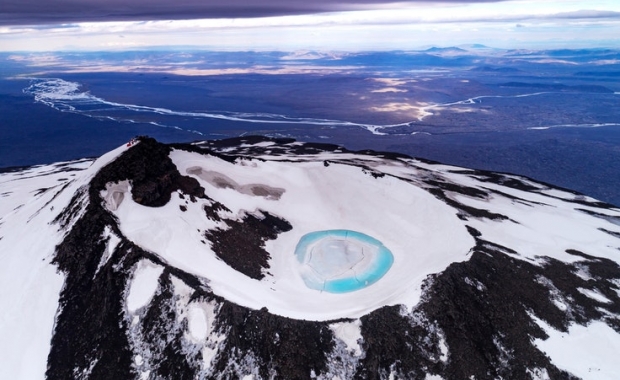The intense seismic activity in Mt. Herðubreið, one of the most recognizable mountains in the Central Highlands, appears to be slowing down. A seismologist at the Icelandic Meteorological Office told the local newspaper Morgunblaðið that the strength and intensity of the quakes appeared to be slowing down after two days of constant trembling.
According to the Seismic Monitoring System of the IMO more than 300 quakes had been detected in the mountain in the past 48 hours. The epicenter of the activity has been concentrated at a significant depth of a few kilometers southwest of the extinct volcano. Most of the quakes have been 0.5-1.8 on the Richter scale.
The area, which is part of the Northern Volcanic Belt, is known for high levels of geological activity. According to seismologists at the IMO there are no signs of imminent volcanic activity in the area. Mt. Herðubreið is a volcano, like every other mountain in Iceland. It last erupted at the end of the last Ice Age, and is believed to be extinct.
Previously: Intense earthquake swarm in Mt. Herðubreið continues, strong quake in Bárðarbunga
The intense seismic activity in Mt. Herðubreið, one of the most recognizable mountains in the Central Highlands, appears to be slowing down. A seismologist at the Icelandic Meteorological Office told the local newspaper Morgunblaðið that the strength and intensity of the quakes appeared to be slowing down after two days of constant trembling.
According to the Seismic Monitoring System of the IMO more than 300 quakes had been detected in the mountain in the past 48 hours. The epicenter of the activity has been concentrated at a significant depth of a few kilometers southwest of the extinct volcano. Most of the quakes have been 0.5-1.8 on the Richter scale.
The area, which is part of the Northern Volcanic Belt, is known for high levels of geological activity. According to seismologists at the IMO there are no signs of imminent volcanic activity in the area. Mt. Herðubreið is a volcano, like every other mountain in Iceland. It last erupted at the end of the last Ice Age, and is believed to be extinct.
Previously: Intense earthquake swarm in Mt. Herðubreið continues, strong quake in Bárðarbunga







